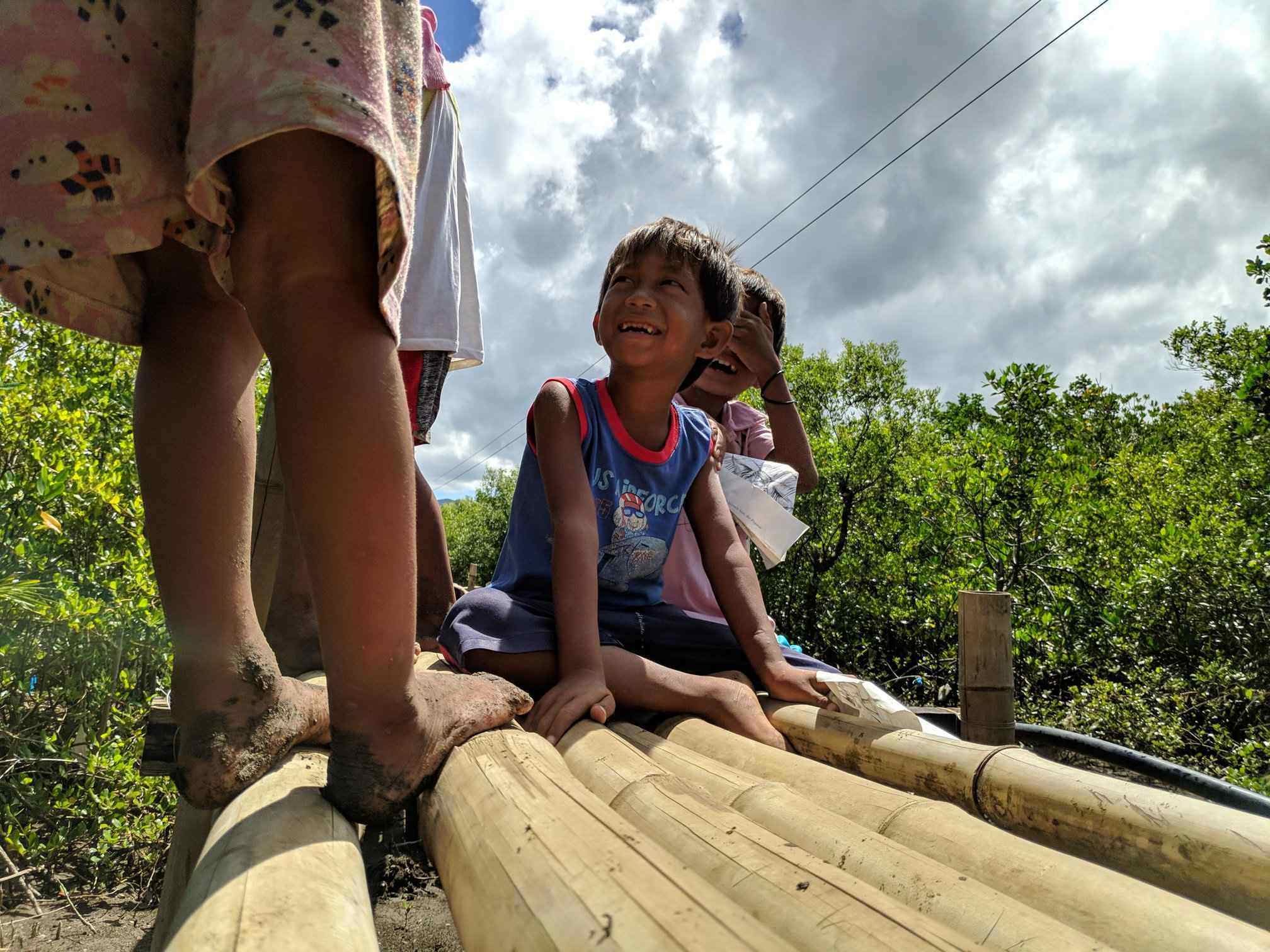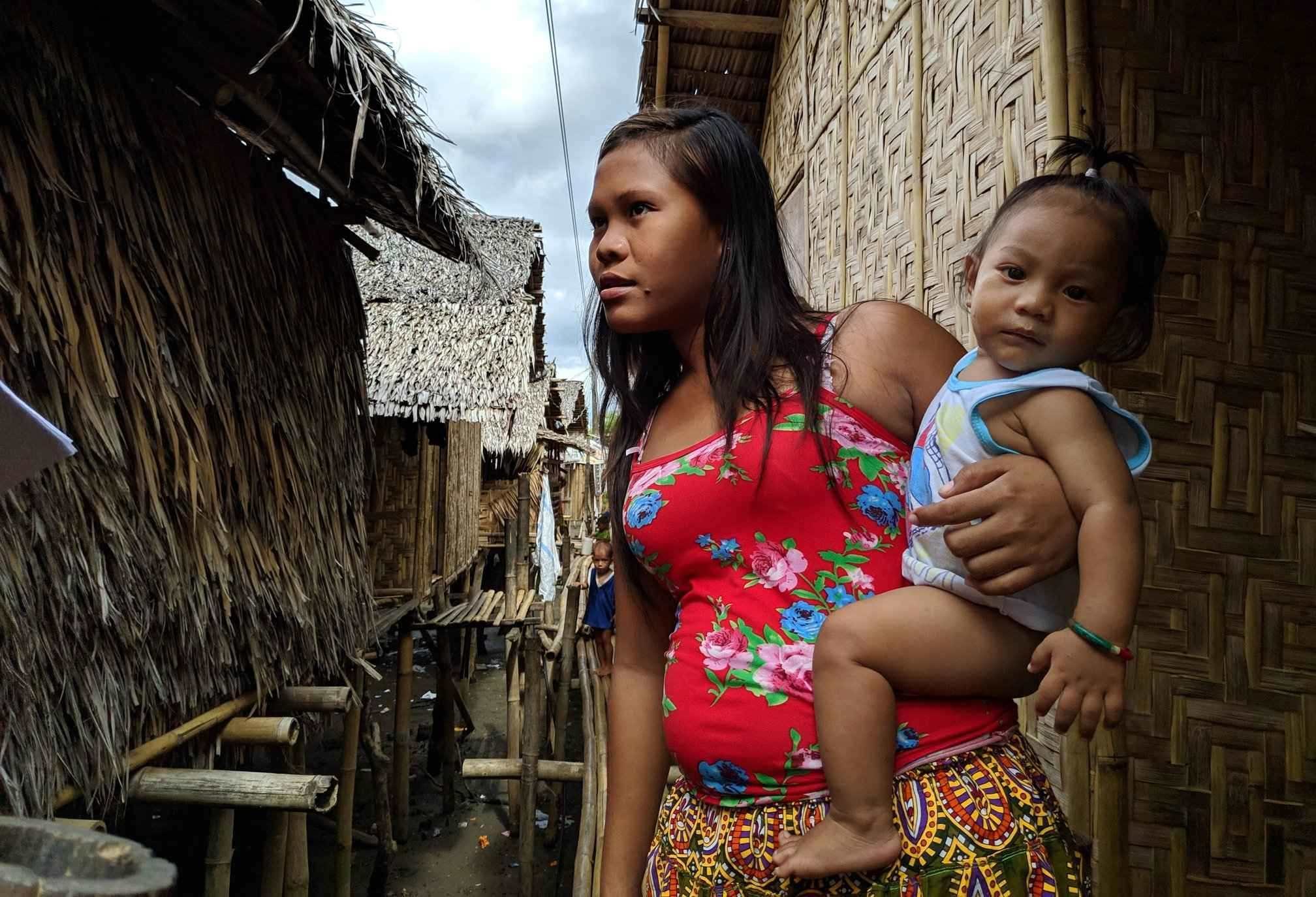SUMMARY
This is AI generated summarization, which may have errors. For context, always refer to the full article.

LEYTE, Philippines – What does it mean to be a minority in a postmodern society? For the Bajaus in Barangay Marvel, Isabel town in Leyte, it translates to discrimination, poverty, and inequality.
There is a Bajau community settled under clusters of nipa huts spread along the coastline of Isabel. They fled Mindanao because of the unabated harassment by sea pirates that has affected their livelihood and tranquility. (READ: The Badjao of Zamboanga: Victims of war and relocation)
“Gikan jud mi sa Basilan. Ang uban sa Zamboanga. Mibalhin mi diri (Isabel, Leyte) kay kritikal. Daghang gubot didto sa amoa,” said Bajau Tribe Leader Jerry A. Sapayani.
(We came from Basilan while others originated in Zamboanga. We migrated here because of the critical situation. Violence is rampant in our place.)
The Isabel Bajaus are predominantly fishermen making a living using their handmade bancas. Lately, however, some of them have abandoned their nets, spears and boats because these could not compete with the fishing freighters from Hong Kong and Taiwan, which trawl inside Philippine waters.
Army of almsmen
The dire situation has turned this once tribe of fishermen, who were always associated with the sea, into a group of land-based almsmen.
From the break of dawn until the middle of the night, everyone goes to town begging for money and food. They go barefoot in groups beyond the spiraling bamboo and hanging bridges of Barangay Marvel, Isabel, Leyte.
Anecita Ladja told Rappler that they begged for donations in the streets because “ing-ana man ang Bajau.” (It is the Bajau way.) Her reply seemed like a surrender as the Bajaus are known sea nomads who dwelled in the southernmost Philippine waters.
Each day, random strangers respond differently to their extended palms. Others pity and shell out cash but most people would just avoid their gaze, the Bajau kids said, adding, “Ila man mi husgahan sa among hitsura ug among kinaiya sa daghang tawo.”
(We are judged based on our appearance and the way we behave in public.)
They are shooed away even when they show off their unrivaled Bajau dance with whistles and the beat of their improvised drums made out of empty milk formula cans.
“Ang mga tiguwang ra man ang mangayo…. Mangayo ra mi ini’g tingpasko,” Ladja explained.
(The elders are usually the beggars. We only ask for donations every Christmas season.)
As they walk the streets, infants strapped around their mothers’ waists cry because of hunger. Their undernourished mothers could not breastfeed babies and they could not afford to buy a infant milk formula.
In most cases, the Bajau women said, a three-in-one coffee mix would suffice as the milk alternative.
“Akon a man na silang giingnaan nga muhunong na sa sa pagpangayo og kwarta ug pagkaon kaz mauwaw ta sa mga Bisaya,” Sapayani said of their way of living.
(I told them to stop begging for money and food from random people because it is humiliating to ask from Visayans.)
But they are forced to beg. “Unsaon man nga dili man pud na sila katrabaho kay wala man na sila ka-eskwela—dili man na sila kabasa ug kasuwat,” Sapayani explained.
(Besides, they are not eligible to apply for white-collared occupations because they haven’t had any kind of education—most of us cannot read and write.)
Only a few of the Bajaus can understand and speak in Cebuano. And this handicap deprives them of jobs.
But the number of Bajau kids who go to formal schools is increasing. According to Sapayani, there are 26 documented learners from the 48 shanties in their community who go to nearby schools. Two of them are expected to graduate from grade school this year.
While the number seems promising, Sapayani said it is still not enough.
He also added that since most jobs consider formal education as one of the basic qualifications, it is no wonder the occupations left for Bajaus range from fisherfolks, fake jewelry vendors, carolers, street sweepers to almsmen.

Monstrous raiders
When Super Typhoon Yolanda (Haiyan) slammed the country’s eastern seaboard, thousands of Filipinos suffered.
But after the catastrophe, a rumor spread in Leyte about the Bajaus sowing fear and hysteria among those living in the coastlines.
In 2013, fictitious stories went around through chain text messages about the Bajaus. The fake messages said Bajaus coming from the sea were raiding houses at night. When pursued, according to the text messages, they would run away and disappear into the sea.
Typhoon survivors who believed the story bought tip-sharpened bamboo stems locally called bagakay and installed those around their houses to protect their properties and lives at night.
In spite of baseless rumors against their tribe, Sapayani commented, “Okay ra man na’ng yaga-yagaan mi nila basta dili lang mi pasakitan. Naanad na man mi ana.” (It is okay if they will make fun of us as long as they will not hurt us. We are used to it already.)
Although time and the lack of opportunities has made them turn away from their nomadic lifestyle, they still belong to the sea at heart. They prefer to settle near the salty breeze of the ocean as if their lives depended on it. This is understandable. After all, their ancestors have been sea-dwellers for centuries
Here, deep in the heart of a mangrove forest in Marvel, Bajaus have an unspoken dream. They dream that someday it will be a better world for them. A world where people around them will stop the ethnic discrimination and their kids will become professionals. And when that day comes they will no longer be begging in the streets.
How to help
Sapayani highlighted the importance of education to the new Bajau generations. He told Rappler that donations like school supplies and books are valued. Likewise, any help to motivate the 26 documented to go to school is welcome.
Donors are advised to inform Jerry beforehand because their community is a long walk from the national road.
Donations may be sent using the following details:
SITIO BAWOD, BRGY. MARVEL, ISABEL, LEYTE 6539
C/O JERRY SAPAYANI
Contact Number: +639152373602
– Rappler.com
Marthy John Lubiano is a Rappler lead mover in Palompon, Leyte. He is a graduating Bachelor of Arts in Communication student at Palompon Institute of Technology and is the Executive Editor of Fulcrum.
Add a comment
How does this make you feel?
There are no comments yet. Add your comment to start the conversation.